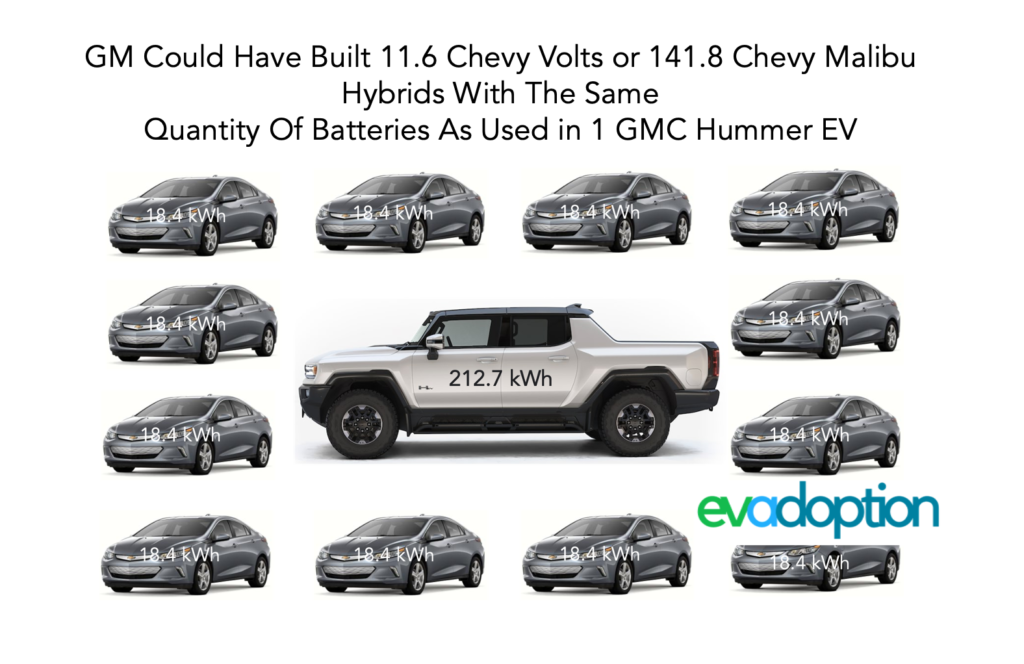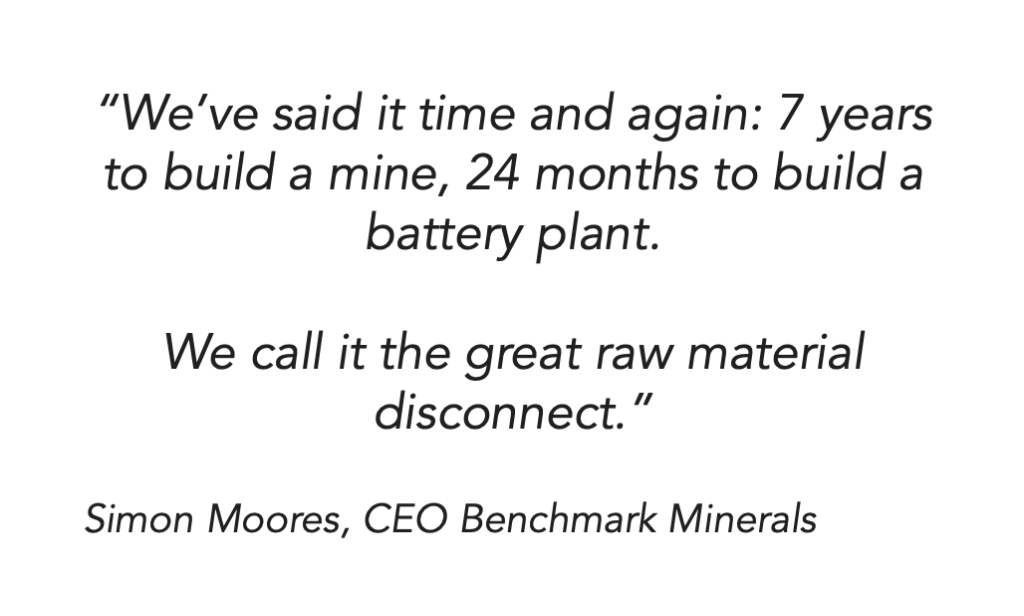In the transition to electrifying transportation, we need to be smart about how we allocate a limited supply of batteries and the minerals that go into them.
We also need to understand that in the US, it will take until at least 2035 for most American buyers of new cars and trucks to embrace buying a full BEV. And so to reduce GHGs as quickly as possible, this means we need those vehicle buyers to choose as their next “vehicle” purchase an alternative vehicle type or powertrain that meets their needs, budget, and use cases — including regular hybrids, PHEVs, getting rid of a car, e-bikes, mass transit, NEVs, etc.
In the image below I used an extreme example of the poor use of batteries. GM’s GMC Hummer EV is an absolute beast, fun to drive, with four-wheel steering it can turn on a quarter (not quite a dime), and of course it’s crazy fast and powerful. I had the chance earlier this year to take one off-roading out in the Arizona desert, on the freeway, and on a closed track. It is an impressive vehicle. But, and a HUGE BUT, it is also the least efficient electric vehicle available in the United States and is frankly completely not what we need today if our goal is to reduce GHGs.

While GM has unwisely discontinued both the Chevrolet Volt PHEV and Malibu Hybrid, from the 212.7 kWh battery used in the Hummer EV, GM could have produced:
– 11.6 Chevrolet Volts (18.4 kWh battery); or
– 141.8 Chevrolet Malibu Hybrids (1.5 kWh battery)
It’s going to take at least a decade to build up our battery supply chain in the US from mining minerals to refining them and producing actual usable materials, manufacturing battery cells, and assembling cells into modules and packs.

By 2025 I expect there will be at least two dozen BEVs (light passenger vehicles) available in the US with battery packs of 100 kWh or more. These large batteries will be used in pickups, performance and luxury sedans, CUVs, and SUVs – most of which would be better served as PHEVs and regular hybrids until batteries are more efficient (e.g., solid-state batteries, etc.) and our supply chain and fast charging infrastructure is not only in place, but reliable.
Efficiency and highest and best use of batteries is one of the conversations we need to have in the US right now, but many remain focused on a “BEV or bust” mentality.
Reducing GHGs is our goal, NOT increasing adoption of BEVs.
Note: I originally posted this on LinkedIn where as of September 5, 2022, the post has more than 110,000 impressions, nearly 700 “likes”, nearly 160 comments, and more than 50 shares. This is by far the LinkedIn post with the highest engagement I’ve every had. It resonated for a variety of reasons, but fundamentally I believe people are waking up to the electrification challenge ahead – our biggest issues is not demand, but supply — especially of battery minerals and cells — and therefore we need to be strategic about how we best use these resources to reduce GHGs.

 Announcing the acquisition of EVAdoption by Paren →
Announcing the acquisition of EVAdoption by Paren →
3 Responses
Where does battery recycling fit in its ability to provide minerals for new EV batteries without mining’s environmental and labor problems?
Battery recycling will play a significant role in the future as a source of needed battery minerals. The challenge now and for another 20 years is that there simply are so few old EVs that have end of life batteries that can then be recycled. But perhaps around 2045-2050, we may actually have nearly enough old EVs where we can recycle their batteries each year to supply nearly enough minerals for a future year’s EV sales in the US. So for the near term we need to be very efficient with our use of batteries.
I think if people are concerned about waste, it is better to direct energy towards increasing public transit funding. Public transit is even better for the environment than electric vehicles, and the resources to throughput ratio is far superior, as on average only 1.2 people occupy the average car. This increases traffic, miles traveled, emissions, raw material input, and results in more inefficient land usage.